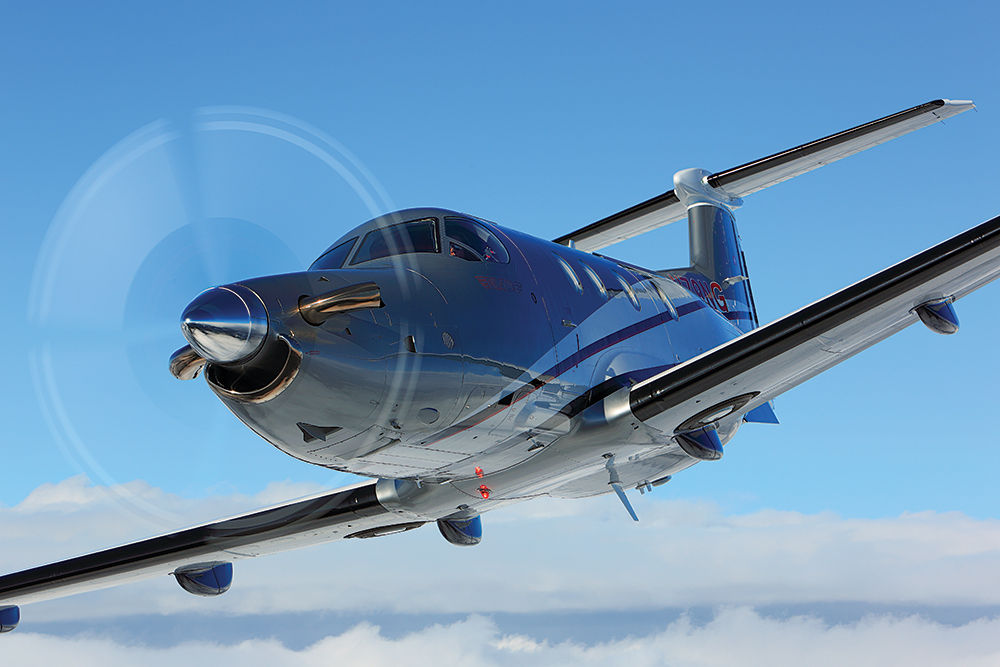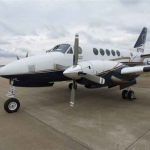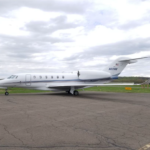In my previous article, I discussed the history of the PC-12 and its developmental background. This article will focus on the model’s production history. The PC-12, like most long produced aircraft types, has gone through numerous modifications, upgrades and designation changes. The three basic model designations of the PC-12 are:
PC-12/41- 4100KG MTOW
PC-12/45- 4500KG MTOW
PC-12/47- 4740KG MTOW
If you are considering purchasing a pre-owned Pilatus, there is much more to consider besides the year and price of the aircraft for within these designators there are 11 groups of serial numbers. Since the PC-12 was introduced in 1994, the Pilatus engineering and production philosophy has been to bundle aircraft modifications into these aircraft groups or series. Each series, with its respective changes covers a specific block of serial numbers. If you were to buy a new PC-12 today, it would incorporate all the standard series changes that preceded it, plus any new modifications that may be put into the next series. If you were to purchase a pre-owned PC-12, depending on the serial number and series, it may incorporate some, but not all of the overall changes depending on its service bulletin(SB) status. The different series numbers and the corresponding serial numbers are listed below:
Series 1: SN 101 – 120 1994 / 1995
Series 2: SN 121 – 140 1996
Series 3: SN 141 – 160 1996 / 1997 (PC-12/45 9920 MTOW introduced)
Series 4: SN 161 – 180 1997
Series 5: SN 181 – 200 1998
Series 6: SN 201 – 230 1998 / 1999
Series 7: SN 231 – 260 1999
Series 8: SN 261 – 320 1999 / 2000
Series 9: SN 321 – 400 2000 / 2001
Series 10: SN 401 – 888 2000 – 2008 (PC-12/47 introduced at SN 683 onwards)
Series 11: PC-12NG: SN 1001 – onwards (2008 to present) note that there is not a series designation for the PC-12NG
The more significant changes associated with the series are listed below:
Series 1 and 2 (SN 101-140)
- PC-12 serialization which included upgrading the generator wiring, anti-ice system and Engine Instrument System (EIS)
Series 3(SN 141-160)
- PC-12 gross takeoff weight increased from 9,040 lb. to 9,920 lb. The increased gross weight option became standard equipment with S/N 181. SB 04-001 3/25/97
- Flight Time Counter. No SB.
Series 4(SN 161-180)
- New pilot and copilot seat with improved adjustment mechanism. SB 25-001 9/24/97
- New passenger seats certified for increased gross weight. No SB.
Series 5(SN 181-200)
- New ducting and temperature control valve (engine compartment). SB 21-003 10/97
- New heat ducting in cabin. SB 21-002 2/17/98
- New insulation on cargo door, sidewall structure and emergency door panels. SB 25-012 3/99
- New head impact modifications to nine-passenger commuter layout. SB 25-006 4/7/98
- New oxygen shutoff lever in cockpit. SB 35001
- Sixty second engine start relay installed. SB 24-004 New Engine Instrument System (EIS) software. No SB.
Series 6(SN 200-230)
- New smaller wingiets. SB 57-003 10/1/98
- New clamps on engine exhaust for fire detection SB 71-002 1/13/98
- New seal on engine cowling. No SB.
- New heated windshield (heats full wind screen). SB 30-007
Series 7(SN 231-260)
- New auto-start with relay installation (Pilots left lower panel) disconnect starter after 52% NG. SB 80- 001 11/6/98
- Passenger seat cushions (standard seats) recovered at Pilatus with heavier fabric underneath. No SB.
- Hydraulic system has new pressure container with fluid level window. SB 29-002 8/12/97
Series 8(SN 261-320)
- New EIS system software. No SB
- Installation of three seat bench in executive configuration. SB 25-014
- New Cockpit and cabin insulation. SB 25-012
Series 9(321-400)
- New exterior lighting
- Recognition SB 33-001
- Red Beacon SB 33-002
- Logo SB 33-003
- Second pitot/static system providing pilot and co-pilot with totally independent pitot/ static systems with heated pitot mast and static ports. No SB
Series 10 (401-888)
- New EIS including Engine Condition Monitoring System(ECMS) which allow the EIS to capture all critical; engine parameters that can be downloaded to a laptop and recorded for engine trend analysis. STC
- New Central Advisory and Warning System(CAWS) with audio callout.
- New Standby Power System utilizing a separate Standby Bus off the main battery to provide Pre Flight Ground Clearance Delivery and emergency poer to the #1 Nav/Com, KLN 90B GPS, audio panel and MFD.
- KMD-850 MFD replaces existing MFD and WX Radar Indicator options. New system has Moving Map display, EGPWS,WX radar and TCAS interface. No SB
- Optional- ELT 406MHz
- Standard SN 476 and on- Goodrich steel brakes. SB 32-013
- Standard SN 521and on- GPS interface is available. Installation of guarded conditions lever that prohibits inadvertent engine shutdown.
- Standard SN 540 and on- Engine accessory gearbox chip detector. SB 79-005
- Standard SN 669 and on- New cabin LED lights.
- Standard SN 684 and on- All PC-12’s built as PC-12 /47 with 10,361 MTOW
- Since the /47 was not approved by EASA until 2006, some aircraft were delivered as /45 variants. SN’s 684,710,723,728 and 745 can install a mod which permits them to convert their aircraft to /47’s.
- Some of the new changes to the /47’s are:
- New Crew seats
- New winglets
- New empennage dorsal fin
- New ailerons for better roll handling
- New LED NAV lights
Series 11(SN 1001-present)
- PC-12 NG (Next Generation) introduced- see my previous blog for NG upgrade specifications.
*This list is not all of the series differences.
As you can see, there are many different PC-12 aircraft available. If you are looking within a specific designator, this comparison should help you understand what you are buying.
Tim Palma






